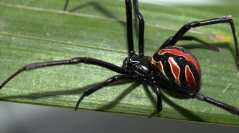

 European Journal of Taxonomy
897 (1) - Pages 1-56
European Journal of Taxonomy
897 (1) - Pages 1-56A new species of the spider genus Latrodectus Walckenaer, 1805 from Mexico is described based on an integrative taxonomic approach. Latrodectus occidentalis Valdez-Mondragón sp. nov. is described using the molecular markers cytochrome c oxidase subunit 1 (CO1) and internal transcribed spacer 2 (ITS2), morphology of male and female specimens, and Species Distribution Models (SDM). Four molecular methods for species delimitation were implemented. The new species is characterized by having a unique dorsal coloration pattern on the abdomen. Latrodectus occidentalis sp. nov. is considered a distinct and valid species for four reasons: (1) it can be distinguished by morphological characters (genital and somatic); (2) the average interspecific genetic variation is > 2%; (3) 12 haplotypes were recovered within the species, being separated by the next close haplogroup of L. hesperus Chamberlin & Ivie, 1935 (30 mutations); and (4) congruence was observed among the four molecular methods. The number of recorded species of Latrodectus from Mexico increases to four: Latrodectus mactans (Fabricius, 1775), L. hesperus Chamberlin & Ivie, 1935, L. geometricus C.L. Koch, 1841 (introduced), and L. occidentalis sp. nov. The diversity of the genus Latrodectus from Mexico is surely underestimated, and more sampling is needed from the different biogeographical provinces and ecoregions to fill in these gaps.
Integrative taxonomy, North America, species distribution modeling, DNA barcodes, morphology